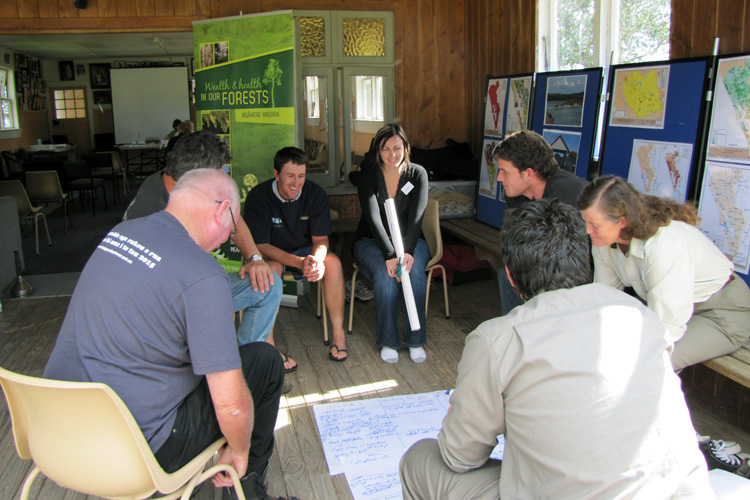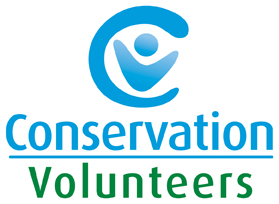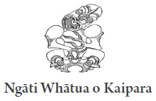Who We Are
Welcome to the World of Kaipara where we believe in creating a healthy and productive Kaipara Harbour. This is the online hub for information, knowledge, tools and projects relating to the Kaipara Harbour, the catchment and ecosystem ki uta ki tai mountains to the sea.
The Integrated Kaipara Harbour Management Group (IKHMG) was established in 2005 and its key purpose is to promote integrated management and inter-agency coordination and kaitiakitanga of the Kaipara Harbour and its catchment.
Integrated management of the Kaipara harbour is a process of utilising both traditional Maori philosophy and western science philosophy to manage the Kaipara as a interdependent system. Management is cross-sectoral and activities are co-ordinated across all levels. Management, planning and research recognise that the catchment, harbour and coast are linked and achieves the common vision and longterm objectives for the Kaipara Harbour.

(Image: IKHMG 2011)
Our Common Vision
We work towards a common vision ‘a healthy and productive Kaipara Harbour’ in order to address particular environmental management issues affecting the health mauri of the Kaipara. There are longterm objectives in support of the common vision. They are: 1) To protect and restore native biodiversity, 2) To restore sustainable use of fish and invertebrate stocks, 3) To protect and restore the Mauri of Kaipara, 4) To increase understanding of Climate Change impacts, 5) To promote socio-economic opportunities, and 6) Integrated co-management of Kaipara ecosystems, catchment and harbour.
Integrated management of the Kaipara harbour is a process of utilising both traditional Maori philosophy and western science philosophy to manage the Kaipara as a interdependent system. Management is cross-sectoral and activities are co-ordinated across all levels. Management, planning and research recognise that the catchment, harbour and coast are linked and achieves the common vision and longterm objectives for the Kaipara Harbour.
The IKHMG is also the vehicle to implement obligations between Ngāti Whatua ki Kaipara hapu and MOU kaitautoko partners under Treaty of Waitangi Deed of Settlement obligations particularly giving effect to kaitiakitanga and hapu management plans.
Background:
The Kaipara Harbour is New Zealand’s largest estuarine ecosystem and is the receiving environment of a massive 640,000ha catchment that extends across the Auckland and Northland regions. The indigenous Māori people of the Kaipara, Ngāti Whātua, are spiritually and physically intertwined with their most sacred treasure – the Kaipara Harbour. To address the ongoing environmental degradation to the health of the Kaipara, tribal elders have led the establishment of a multiple-stakeholder partnership combining two approaches to environmental management: one indigenous (Mātauranga Māori) and the other derived from western knowledge. This forms the basis for future research, planning, policy development and management of the Kaipara ecosystems, harbour and catchment.
The Kaipara forest, freshwater, shrublands, dunelands and estuarine ecosystems have suffered significant loss, continue to decline and under ongoing stress. The Kaipara also contains some of the rarest ecosystems in New Zealand namely sand dune, seagrass, freshwater and estuarine wetland ecosystems. Evidence exists that the Kaipara Harbour plays a significant fisheries role in the wider west coast north island ecosystem as a nursery ground for key commercial and recreational species – snapper, grey mullet, flounder, white shark, hammerhead shark and rig.
The impetus for action started from the community and hapū ongoing conflict with commercial fishing activities. Since the late 1990s, community, hapū and multiple agencies have worked together to address this conflict and the ongoing decline of the natural world of the Kaipara.
Socially and economically, the Kaipara predominantly supports pastoral farming, agriculture and fisheries. It is governed by six government departments: Kaipara District Council, Whangarei District Council, Auckland Council, Northland Regional Council, Department of Conservation, and Ministry of Fisheries. All agencies apply a plethora of various statutory regulations to manage the Kaipara however, it is applied at different management scales using different management philosophies. This current management approach has contributed to the continuing decline in the health mauri of the Kaipara Harbour.
The IKHMG was established by Ngāti Whātua in 2005 and is led by the Te Uri o Hau Settlement Trust through its Kaitiaki Unit the Environs Holdings Trust and by Ngāti Whātua Ngā Rima o Kaipara.
Guiding Principles:
The work and relationship of the IKHMG is guided by a set of four principles. They are:
- Kaitiakitanga
- Integrated Ecosystem-Based Management
- Manaakitanga respect
- Co-management
Our approach is shaped and grounded with Ngāti Whātua ki Kaipara hapū tikanga and values. The IKHMG approach values and incorporates Mātauranga Māori (Māori knowledge) and Western knowledge paradigms. The concept of whakapapa (genealogy/origins) is at the core component of our thinking and our workplans. A Whakapapa approach ensures that we are guided by the wisdom of our Tupuna (ancestors), and are required, as Kaitiaki of the present, to leave our mokopuna (grandchildren) with a healthy and improved environment to inherit. The IKHMG embraces this approach and its values of long term visions, sustainability and intergenerational equity.
Role & Key Functions:
We work in a collaborative, multi-stakeholder and partnership environment for the purposes of achieving a common vision. We bring expertise from across multiple agencies, sectors, hapu and community groups to advance the vision.
Our key functions and responsibilities broadly lie across four areas:
- Knowledge & Information
- Partnership
- Regulation & Policy
- Facilitation
- Kaitiakitanga / Guardianship
We form partnerships, commission information and knowledge gathering and influence regulation and policy. We also facilitate opportunities or act as a ‘broker’ to engage multiple stakeholders to work towards the common vision.
The IKHMG does not direct the executive roles of its constituent parties nor the conduct of their respective functions duties and powers. Rather the IKHMG has been formed in support of the kaitiakitanga exercised by Ngati Whatua, and in recognition of the opportunities that it presents to promote integrated and co-ordinated management of the Harbour. We work together for the health of the Kaipara Harbour.
We add value by promoting integrated management so that ‘one’ Kaipara is managed is (w)holistically as possible in decision-making for resource consents, planning, policy, research and monitoring.
We must be disciplined in our role
To formalise the IKHMG a Terms of Reference (TOR) was written and adopted in 2009. The TOR formalises in good faith, the commitment of the parties to the TOR. The TOR is not intended to create legally binding rights or obligations or to fetter the exercise of any statutory responsibilities or duties of the respective parties. The IKHMG will report back to parties governance levels as necessary and appropriate and to the wider stakeholder group and participants.
Our Expertise:
The IKHMG has expertise that includes a wide range of both traditional Māori knowledge and research and western science knowledge and research; partnerships, environmental policy, planning and legislation; kaitiakitanga and hapū management.
Key Tools / Responsibilities:
In addressing the longterm objectives, the IKHMG parties must utilise the following key tools or responsibilities – that is the parties must mainstream them across their work relevant to the Kaipara harbour, catchment and ecosystems:
- Kaitiakitanga
- Community-led initiatives
- Innovation
- Partnership
- Information and Knowledge
- Regulation & Policy
Kaitiakitanga represents responsibilities, obligations, guardianship, care and reinforces spiritual attachment to the natural world; wise management; and is inextricably linked to mana (authority, responsibility). This kaupapa provides an opportunity for Kaipara hapū to apply their responsibilities and knowledge and achieve particular cultural aspirations. To restore the mauri of the Kaipara we must address and restore the health of the Kaipara whenua.
Partnership recognises that the future of the Kaipara relies on partnership initiatives across sectors, agencies, industry, groups and private land owners to achieve the common vision and restore mauri of the Kaipara Harbour.
The IKHMG recognises and supports community-led initiatives. The IKHMG seeks linkages with other programs and activities, such as:
- Working and supporting community groups and catchment groups, including Coastcare, NZ Landcare Trust, Otamatea Harbourcare, South Head Landcare, which play a significant role in implementing grass-roots and property-scale action.
- Promoting and supporting industry initiatives, such as improvements or developments of best practice or codes of practice relevant to the longterm objectives
- Supporting Government initiatives, treaty settlement processes and research planning
- Information sharing and building relationships
Information and knowledge, both western and Mātauranga Māori, must be utilised, gained, and respected; be utilised in decision-making processes and integrated management of the Kaipara Harbour.
Innovation methods are required to address the large sphere of issues and longterm objectives for the Kaipara. Such methods recognise that no individual agency, group and community can achieve the Common Vision. Innovation tests the realms of planning, research, socio-economic activities. For example, the Kaipara Harbour Strategic Plan of Action 2011-2021 recognises the need for social-ecological coupling of research rather than a single disciplinary approach to research programs. The Plan encourages the development of innovative methods that can be applied at farm-level, encouraging leadership amongst the Kaipara community.
Regulation and policy tools are essential to achieve restoration and sustainable, integrated landuse practices across a catchment that sits across Auckland and Northland jurisdictions – healthy land means a healthy harbour. Use of this tool allows for recognising and linking with current and future statutory planning and policy programs.

















